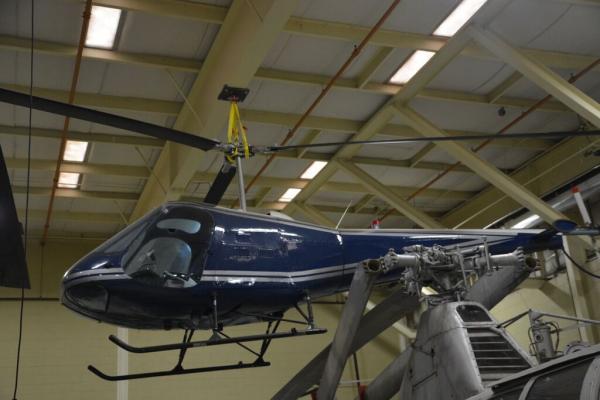
Designer Rudolph J. Enstrom established his R. J. Enstrom Corporation in 1959 to develop an experimental light helicopter. His prototype made its maiden flight in November 1960 and production of the F‑28 two‑seater began in 1963. Enstrom built a limited number before debuting the improved Model F‑28A in 1968. This was followed shortly afterwards by the F‑28B derivative, which had a piston engine with a turbocharger, and by the T‑28, with a turbine engine.
In October 1968, the company was acquired by the Purex Corporation. Purex then sold its interest in Enstrom to F. Lee Bailey in January 1971, at which time production of the F‑28A resumed. By the end of 1977, over 500 had been produced. Although not an innovative aircraft, the F‑28A performed well due to its light structure and clean lines. The extensively‑glazed forward section of the fuselage accommodated the pilot and two passengers on a single bench seat.
The power plant–a 205 shp Lycoming HIO‑360‑ClB driving a three‑blade, articulated metal rotor by means of a simple transmission system–is installed at the center of the fuselage. There are two fuel tanks with a total capacity of 115 liters (25.3 gallons). The semi- monocoque aft fuselage section has a small vertical fin and a two- blade light alloy tail rotor.
The Museum’s aircraft, Serial # 5, was the second production helicopter built by Enstrom in August 1966. It was originally given an experimental certificate on October 17, 1966. Enstrom flew it to Detroit and exhibited it in a trade show, where it won an award for the best product designed in Michigan in 1966. It beat out the Ford Mustang! This helicopter was then leased to an operator in Vancouver, B.C. in January 1967 and returned to the factory in Menominee, Michigan in March.
In April 1967, it was modified to compete in Army trials for a new training helicopter. The original F-28 had no skylight or lower chin windows but for the Army competition, modifications included chin windows and a center pedestal instrument panel. In September 1967, ownership was transferred to Airesearch Corporation, which installed an Allison turbine engine and operated it as a “test bed” called the T-28 prototype. The instrument panel was changed back and skylights installed In January 1968. In 1973, the aircraft was transferred back to Enstrom and remanufactured as an F 28-A, its present configuration. Enstrom sold it to Executive Helicopters in Chicago in November 1975. It was used by a radio station traffic patrol until 1988, flying some 8,000 hours.
| Aircraft Specifications | |
|---|---|
| Crew | 1 |
| Passengers | 2 |
| Rotor Diameter | 34 ft |
| Maximum Speed | 120 mph |
| Height | 9 ft 2 in |
| Empty Weight | 1,560 lbs |
| Gross Weight | 2,600 lbs |
| Engine | 250 shp Lycoming H10-360 |
| First Flight | November 1, 1960 |
| Source | Loan from Bayard du Pont Loan Restored by AHMEC volunteers |